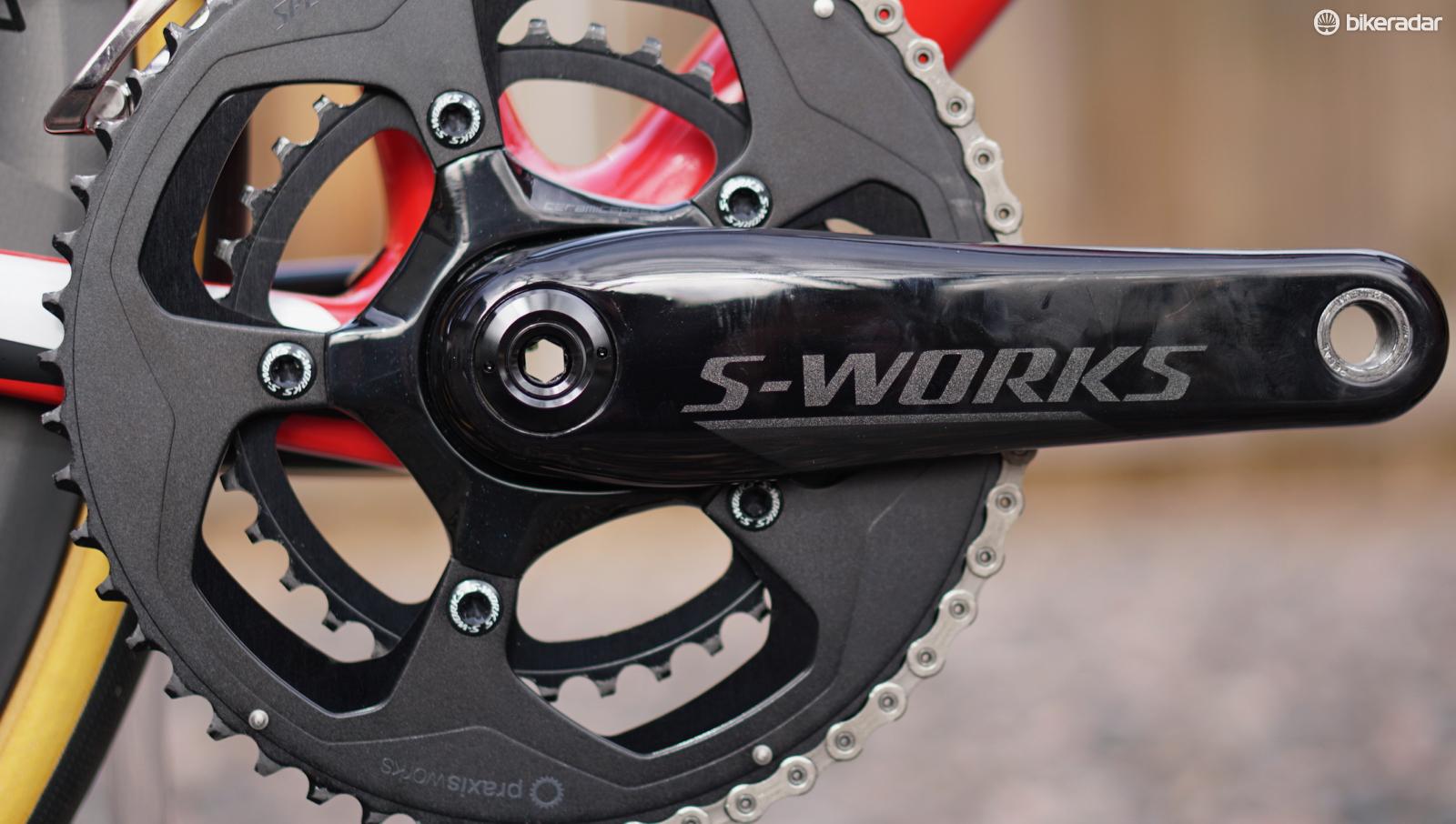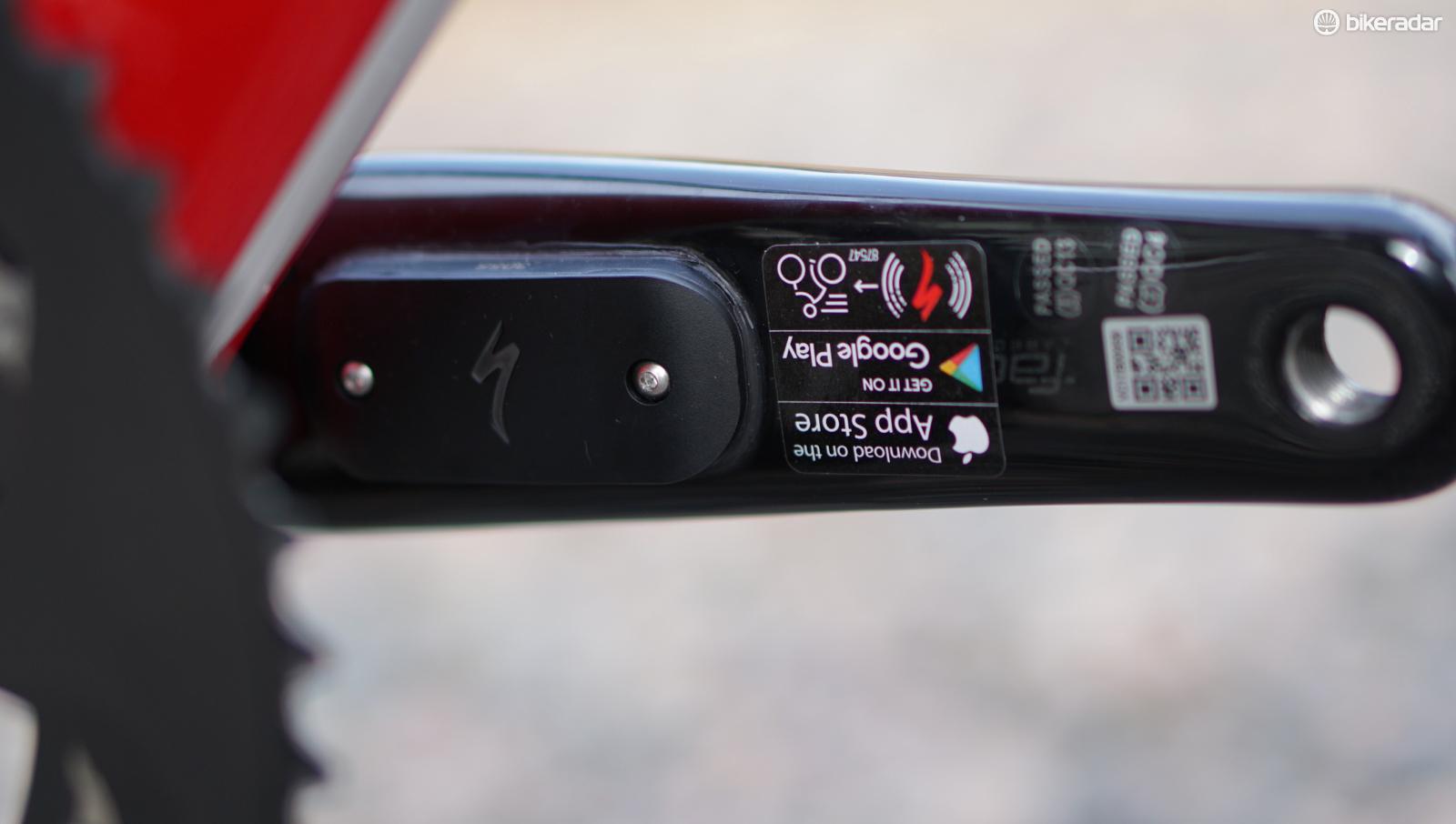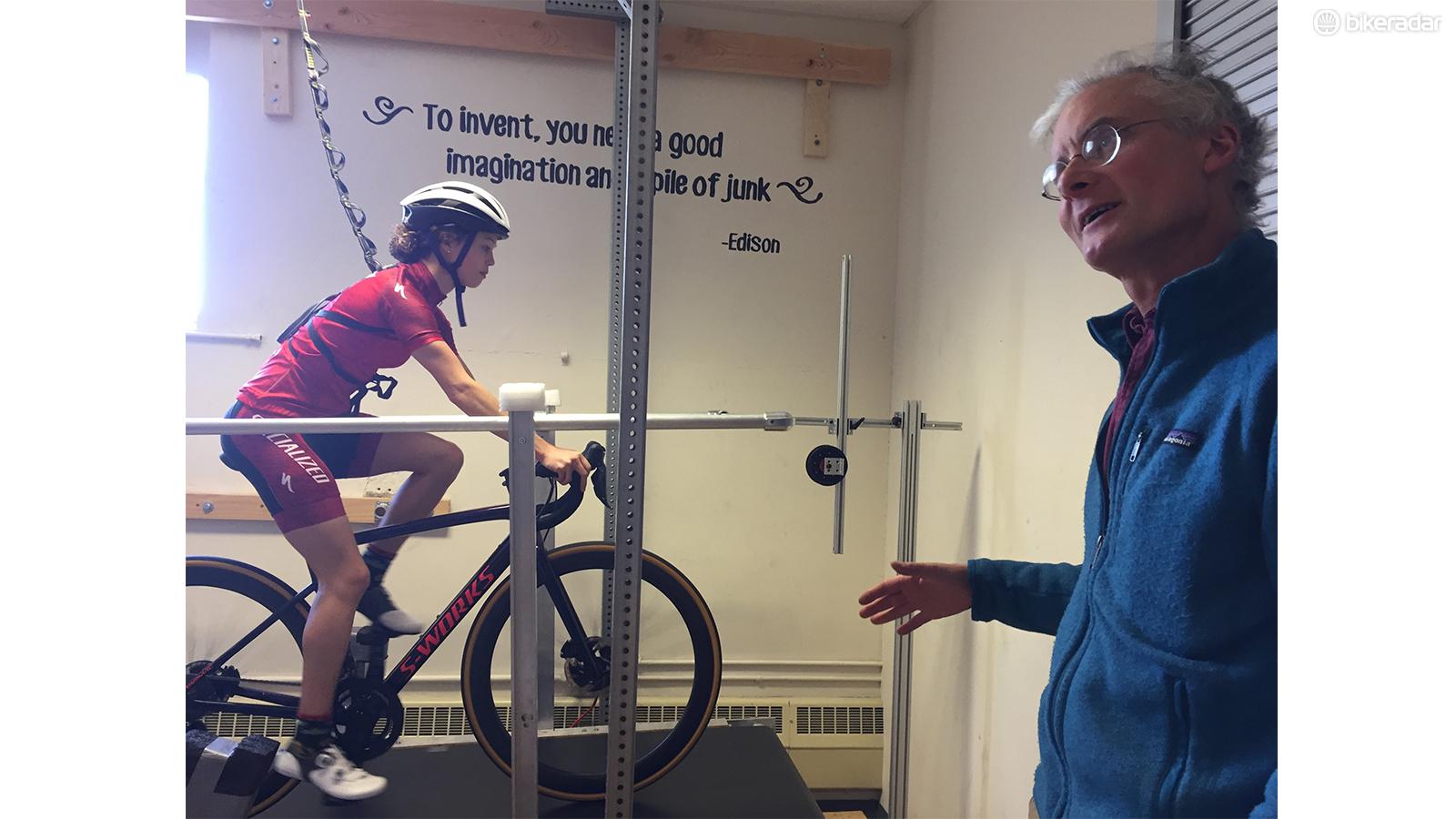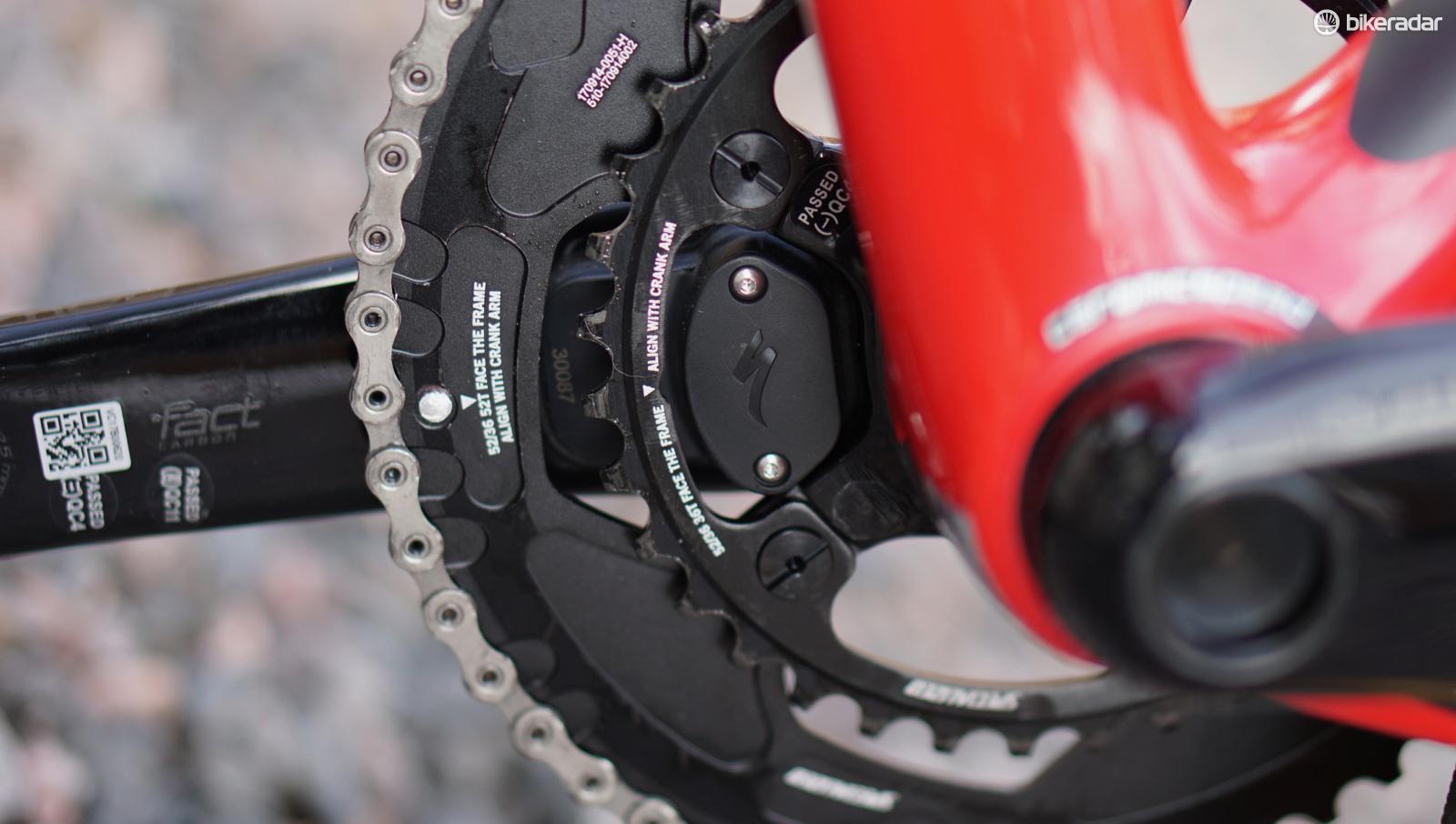Specialized launches S-Works Dual and Single power meters
Specialized partners with 4iiii for Tarmac SL6 Disc own brand power meter







This article first appeared on BikeRadar
Specialized was already one of the very few brands to sell bikes complete with power meters, but it has now become the only bike brand to have its own power meter stock on its bikes with the new Tarmac SL6 Disc. The S-Works $1,150 / £995 Dual and $750 / £650 Single power meters are, as their names imply, dual-sided and single-sided power meters integrated into carbon S-Works cranks.
- Tested: S-Works Power meter on S-Works Tarmac SL6 Disc
- Shimano Dura-Ace R9100-P power meter review
- Specialized S-Works Tarmac SL6 Disc review
Specialized partnered with 4iiii for the design and manufacture of the strain-gauge-based meters, which are built into the inside of the carbon arms.
Specialized is claiming their system to be the lightest and most precise on the market. The claimed weight is 440g for a 172.5mm crankset – but without chainrings, which is how the meter will be sold. On the Tarmac Disc, the cranks use Praxis rings.

Specialized will be selling the Power cranks as single-side and dual-sided meters
For reference, a 172.5mm Shimano Dura-Ace R9100-P power meter weighs 559g without rings and a Stages 9100 LR 489 weighs 524g without rings.
The S-Works Dual has a carbon spider, hollow carbon arms and an alloy spindle. The S-Work Single has an alloy spider.
Get The Leadout Newsletter
The latest race content, interviews, features, reviews and expert buying guides, direct to your inbox!
Specialized also has a dual-sided meter built into a Shimano Dura-Ace 9100 crank for £1,200 / $1,500, as well as left-crank meters for Ultegra (£400 / $525) and 105 ($425).
The Shimano Specialized Power cranks will come in 170-175mm lengths, while the S-Works Power cranks will come in 165-180 lengths – but without chainrings.
Prototypes of the Bluetooth/ANT+ meters were tested on a cycling-specific treadmill, and compared against physics modeling, in addition to the traditional method of comparing measured torque against a known weight.

The Power meter works on ANT+ and Bluetooth
Designed in the Locomotion Lab
Chris Yu, Specialized’s director of integrated technologies, said the company set out to design a meter that would be accurate in real-world conditions, not in a lab. So his team started… in a lab. More specifically, Specialized connected with Dr. Rodger Kram, professor emeritus at the University of Colorado, whose life work involves quantifying human locomotion.
His Locomotion Lab at CU has produced a number of things over the years, including what is effectively a running power meter: a dual treadmill that can measure a runner’s force under each foot.
Kram, Yu and others in Specialized’s team — including Retül co-founder Todd Carver who was a graduate student of Kram’s back in the day — set out to replicate most of the real-world conditions except aero drag on a cycling treadmill.

Dr Kram and a CU PhD student demonstrating the Locomotion Lab's treadmill used to test Specialized Power prototype power meters
“Everyone claims their meters are accurate to plus or minus 2 percent — but of what?” Yu asked. “Usually that number is for a weight hanging on a crank, not real-world conditions.”
In Kram’s Locomotion lab (where I last visited for a blind saddle test with Fizik), Kram and his students constructed a cycling treadmill and accounted for bike and rider weight, drivetrain efficiency, rolling resistance, gravity and speed. With the largest element – aerodynamics – removed from the equation, Kram and his students could test a bike’s meter against a known mechanical requirement.
"Some meters can vary in their readings based on things like cross-chaining, or temperature fluctuations," Yu said. So by testing these things in a lab, and running the numbers against what the calculated power should be given a known speed, gradient and mass, Specialized and Kram could test their prototypes against existing power meters.
“In physics, everything can be boiled down to three things: mass, length and time,” Kram said. “We don’t have to assume anything. The other thing we can count on is gravity.”
For their calculations, rolling resistance was measured, and they pegged frictional drivetrain losses at 2 percent.
“We wanted to have a known mechanical power requirement,” Kram said.

A 2032 battery is contained within an IPX 6/7-rated gasket
Initially, Kram and his students tested Yu riding a few prototype meters with a power ramp-up. He would start at 220w, then move to 280w, then 320w, then 380w, each for five minutes. The last two minutes of each five-minute chunk were recorded.
“The worst was within 1.9 percent of calculated power,” Kram said. “The average was within 1 percent.”
Kram noted that the meters read 2.2 percent higher than the calculated power when Yu rode standing up.
To test temperature compensation, the Power cranks were put in a freezer at 0 Celsius. After they were allowed to warm up a little, they were zero’ed and tested, with power being within 0.4 percent of the calculated number, Kram said.
For heat, Kram’s team applied BBs that were heated to 50C. Initially, the meters would read 4.1 percent low, but after 10 minutes would return to within 1.7 percent of calculated power, Kram said.
They also tested while cross-chaining, at a wide cadence range (50-114rpm) and across the cassette, which Kram said result in less than half a percentage variance top to bottom.
Then in March of 2016, Kram and Specialized brought in former US national champion Timmy Duggan, who repeated a similar stair-step test, doing five minutes at various power outputs on six difference cranks. Kram said the mean absolute error of the six meters was 1.6 percent, but that one unit was 3.5 percent high and another was 2 percent low. These were still prototypes; Kram has not yet tested production cranks.
Using this protocol, Yu said Specialized meets or exceeds all competitors. Also, when using the traditional weight-hanging-crank calibration or testing on a dynometer, the Power cranks are accurate to +/-1.5 percent, Yu said.
Specialized Power models, prices and details
Specialized launched the S-Works Power meter today on the S-Works Tarmac SL6 Disc, with other models to follow.
The Power adds a claimed 30g total for measurement on both sides.
4iiii manufacturers the meters for Specialized. 4iiii was the power meter sponsor for two pro teams Specialized has sponsored, Bora-Hansgrohe and Quick Step.
The meters work on both ANT+ and Bluetooth, including power transmission. (Some meters use Bluetooth only for firmware updates.)
The meter runs on 2032 coin batteries, one per side.
Pricing and availability is as follows:
- S-Works Power Crank Dual (on bikes now, this fall for aftermarket): £995 / $1,150
- S-Works Power Crank Single (left side) (this fall): £650 / $750
- S-Works Dura-Ace 9100 Dual (April/May in limited quantities): £1,200 / $1,500
- Power Crank Ultegra Upgrade (left crank) (April/May): £400 / $500
- Power Crank 105 Upgrade (left crank) (April/May): £N/A / $450